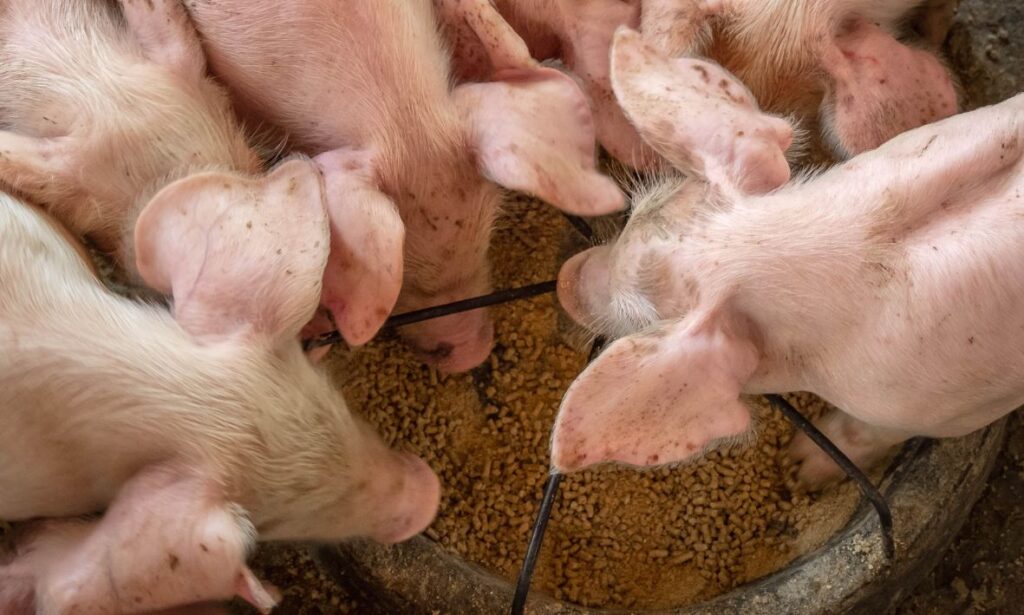A comparative study on zootechnical performance and gut health
In swine production, improving feed efficiency while reducing antibiotic use is no longer just an option — it’s a necessity. Rising concerns about antimicrobial resistance, global regulations, and consumer demands are pushing the industry toward more sustainable alternatives.
But what happens when a growth-promoting antibiotic (GPA) is replaced by a microencapsulated multistrain probiotic?
Study Design
The experiment involved 500 weaned piglets divided into two groups:
- Diet 1 (D1): Microencapsulated multistrain probiotic + growth-promoting antibiotic (GPA)
- Diet 2 (D2): Microencapsulated multistrain probiotic only (no GPA)
Over 49 days, the pigs were evaluated in two feeding phases (Phase 1: day 1–21 and Phase 2: day 22–49). Key performance indicators were measured:
- Feed intake (FI)
- Average daily gain (ADG)
- Feed conversion ratio (FCR)
Results: Comparative Performance by Phase

Key Insights
Phase 1:
Although the group receiving antibiotics (D1) showed slightly better FCR during the first weeks, the probiotic-only group (D2) had competitive performance with only a minor drop.
Phase 2:
Here’s where the shift happened. The probiotic-only group (D2) outperformed in several aspects:
- Higher average daily gain (ADG)
- Better feed conversion ratio (FCR)
- Lower total feed intake, meaning greater efficiency
Why Did This Work?
The probiotic formulation used in this study contained selected strains of Lactobacillus, Enterococcus, Bacillus, and Saccharomyces. These work synergistically to:
- Stabilize the gut microbiota
- Strengthen the intestinal barrier
- Inhibit growth of pathogenic bacteria such as E. coli and Clostridium spp.
- Improve nutrient absorption
The microencapsulation ensures the probiotics remain viable throughout the gastrointestinal tract, protecting them from heat, pH, and moisture variations.
Conclusion: A Future Beyond Antibiotics
Using multistrain microencapsulated probiotics proved just as effective — and in some cases more — than GPAs in pig production. This has direct implications for performance, animal health, and regulatory compliance.
Better FCR
Higher weight gain
Reduction in antibiotic use
This study proves that feeding the future doesn’t have to mean sacrificing productivity.
Want to access the full study or explore our swine nutrition solutions?
Contact us or visit our research page






